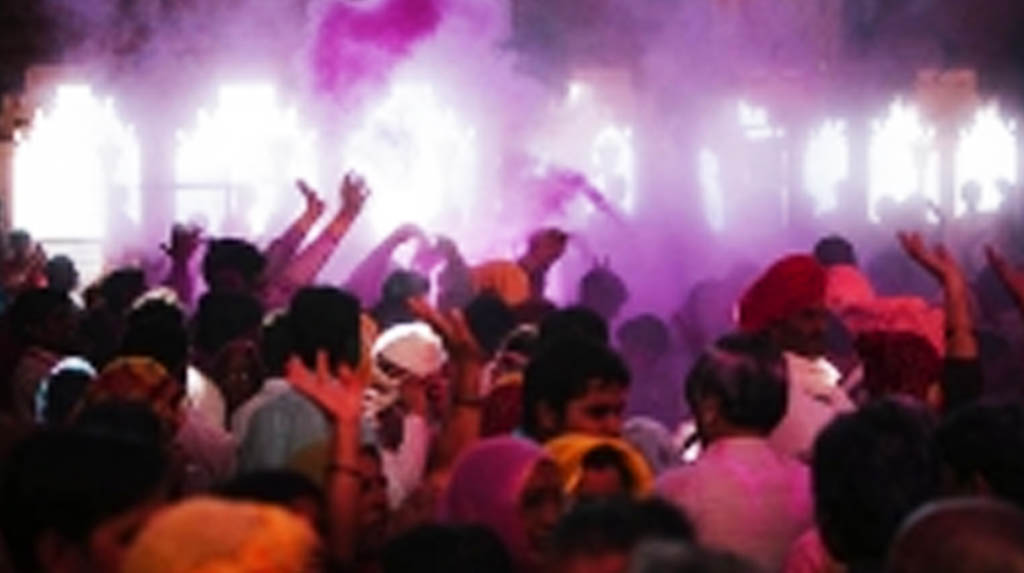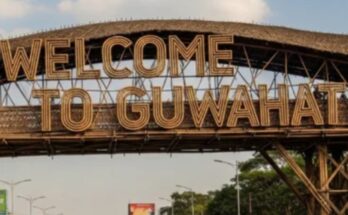The beautiful Ladli ji temple atop the picturesque hill in Barsana wore a desolate look for the first time in its history. Only the local ‘pandas’ were present to partake in the festivities amid a cool breeze.
In normal times, just like Krishna Janmashtami, Radha Ashtami is also celebrated in a big way in Braj and Barsana. This day is celebrated as a festival in the temples of Mathura, Vrindavan, Barsana, Rawal and Maant.
However, the Covid-19 pandemic had compelled the district authorities to ban the entry of outsiders into Mathura district. District Magistrate Sarvgya Ram Mishra announced three days ago that the district borders will remain closed for outsiders. The Sri Krishna Janamashtmi festival was also hit by the pandemic.
The Mathura authorities also did not allow people to congregate in Raval, Radha’s birthplace, adopted for development by BJP MP Hema Malini, across the Yamuna in Mathura.
Similarly, temples in Vrindavan wore a deserted look as pilgrims were refused entry to the holy town.
“Normally the narrow lanes and bylanes of Vrindavan reverberate with chants of ‘Radhey Radhey’ all the time; but this time, the eerie silence thickened the gloomy mood,” lamented activist Jagan Nath Poddar, convener of the ‘Friends of Vrindavan’ organisation.
“Anywhere you go in Vrindavan or in Goverdhan when things are normal, you will only hear the chants of ‘Radhey Radhey’. For the Bengali widows or other residents of Vrindavan, their favourite salutation is ‘Radhey Radhey’.”
Even the celebrations were low-key. “All the ‘pujas’ were ceremoniously conducted. Early in the morning in ‘bhram muhurta’, ‘mool nakshtra’, the deity was given a bath with a mix of milk, curd, and honey. Water from 27 wells, apart from leaves of 27 different trees and dust from two ‘maha teerthas’, was used.”
Turmeric and curd are collected in the temples and the mixture is thrown on people of the Goswami community, Goswami Nandan Shrotriya of Sri Mathuradheesh temple in Agra told IANS.
Pandit Ram Babu Sharma of Daan Garh temple on the opposite hill said: “Radha Ashtami is celebrated on Ashtami of Shukla Paksha in the Bhadrapad month.”
Delving into the birth of Radha, Pandit Madhukar Chaturvedi said: “She was born to Vrishbhanu Gop and his wife Kirti. According to Padma Purana, Lord Vishnu asked his family members to go to earth as incarnations before his birth as Krishna. Therefore, goddess Laxmi, Lord Vishnu’s wife, incarnated as Radhaji. According to Brahma Vaivarta Purana, Radhaji was a friend of Lord Krishna. She was married to a person named Rapan or Rayan. Radhaji is also considered to be Krishna’s lover.”
According to the Vedas and Puranas, Radhaji is also known as Krishna Vallabh. “Lord Krishna was very fond of Radhaji. People listening to Radha Janmashtami story are freed of all kinds of worldly problems. (Radha Radha japat hi sab baadha kat jaye). It is believed that Krishna’s worship is incomplete without Radhaji’s worship. Radhaji is believed to be the controller of Krishna’s life,” Chaturvedi explained.




